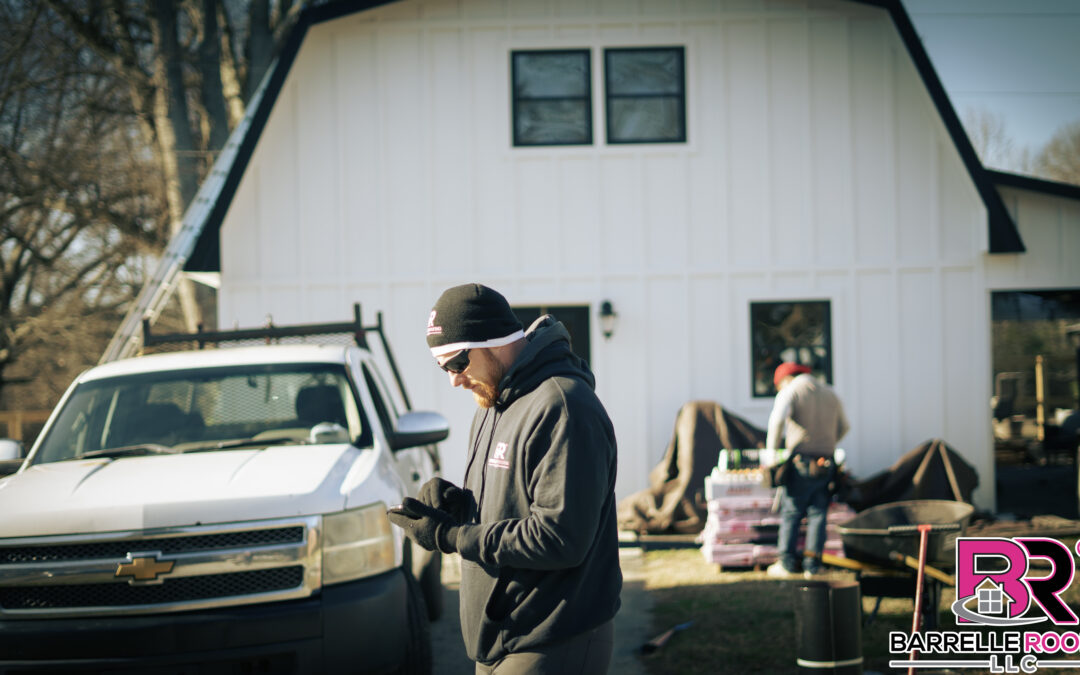Metal Roofs
Metal roofs are a popular choice for homeowners and businesses due to their durability, longevity, and energy efficiency. However, like any roofing system, they can develop issues over time.

Proper maintenance and timely repairs are essential to ensure your metal roof continues to protect your property. In this blog post, we’ll explore common metal roof problems, how to address them, and when to call a professional.
Common Metal Roof Issues
While metal roofs are known for their resilience, they can still experience wear and tear. Some of the most common problems include:
- Leaks and Water Damage – Leaks can occur due to improper installation, loose fasteners, or damaged seams. Water intrusion can lead to rust, mold growth, and structural damage if not addressed promptly.
- Rust and Corrosion – Although most metal roofs are coated to resist corrosion, exposure to moisture and harsh weather conditions can cause rust to develop over time.
- Loose or Missing Fasteners – Metal roofing panels are secured with screws and fasteners that can loosen due to thermal expansion and contraction. This can create gaps that allow water and debris to enter.
- Panel Damage or Warping – High winds, falling debris, or extreme temperatures can cause metal panels to warp, dent, or become misaligned.
- Sealant Deterioration – Sealants and caulking used to waterproof joints and seams can break down over time, leading to potential leaks.
Learn more HERE!
How to Repair a Metal Roof
If you notice any of the above issues, it’s important to take action quickly to prevent further damage. Here’s a step-by-step approach to metal roof repairs:
- 1. Identify the Problem
- Conduct a thorough inspection of your roof to determine the source of the issue. Check for visible damage, loose fasteners, rust spots, and areas where water may be pooling.
- 2. Fix Leaks and Seal Gaps
- Use a high-quality, metal-compatible sealant to patch small leaks and gaps around seams and fasteners. Be sure to clean and dry the area before applying any sealant for optimal adhesion.
- 3. Replace Damaged Panels or Fasteners
- If a panel is severely damaged or corroded, it may need to be replaced. Similarly, any missing or loose fasteners should be replaced with new, weather-resistant screws to ensure a secure fit.
- 4. Treat Rust and Corrosion
- For minor rust spots, use a wire brush to remove corrosion, then apply a rust-inhibiting primer and a fresh coat of protective paint. For extensive rust damage, consider replacing the affected sections.
- 5. Reapply Sealant and Coatings
- Inspect and reapply sealants to joints, flashing, and any areas where the original coating has worn off. Applying a reflective roof coating can also help extend the life of your metal roof by protecting it from UV rays and moisture.
When to Call a Professional
While minor repairs can be handled by a knowledgeable homeowner, some situations require professional expertise. If your roof has significant structural damage, widespread corrosion, or persistent leaks, it’s best to contact a roofing professional. They have the experience, tools, and materials to ensure the repairs are done safely and effectively.
Preventative Maintenance Tips
To minimize the need for repairs, follow these maintenance tips:
- Inspect your roof at least twice a year and after severe weather.
- Keep gutters and drainage systems clear to prevent water buildup.
- Trim overhanging branches to reduce the risk of impact damage.
- Check and tighten fasteners periodically.
- Apply protective coatings as needed to enhance durability.
By staying proactive with maintenance and addressing issues as they arise, you can extend the life of your metal roof and avoid costly repairs. Whether you’re tackling a minor fix or seeking professional help, keeping your roof in top condition will protect your home or business for years to come.
📞 Call us now to schedule your roof inspection!
